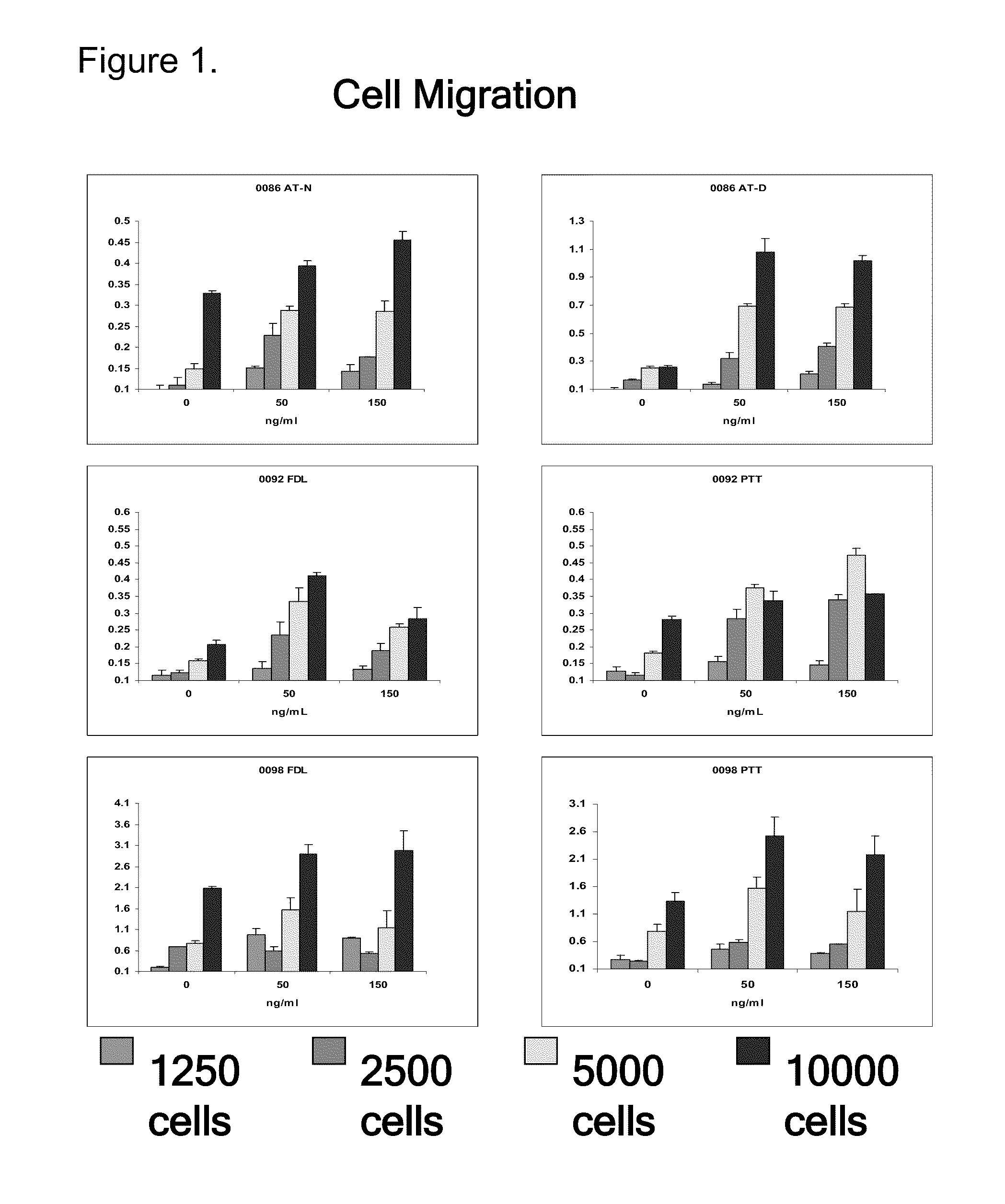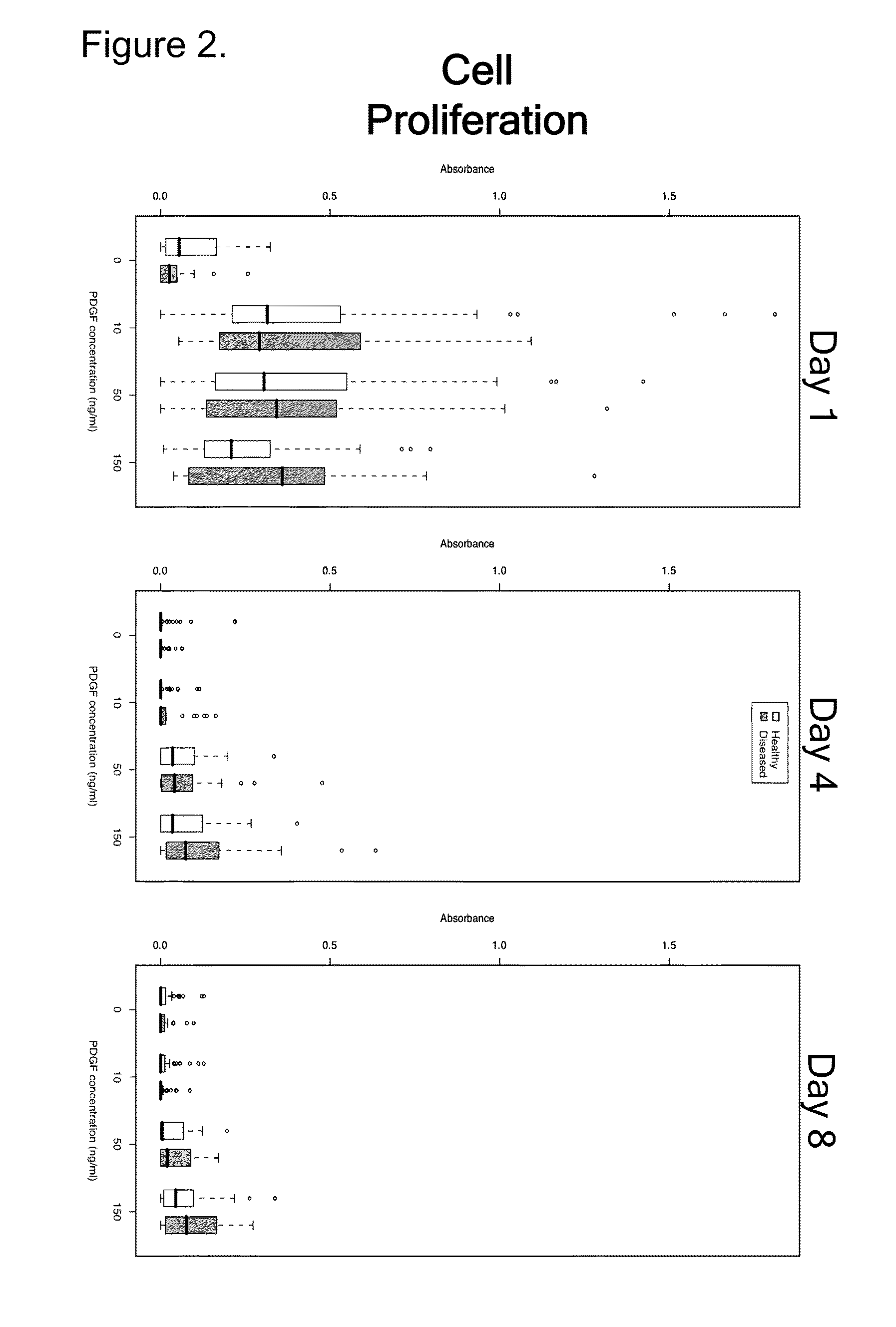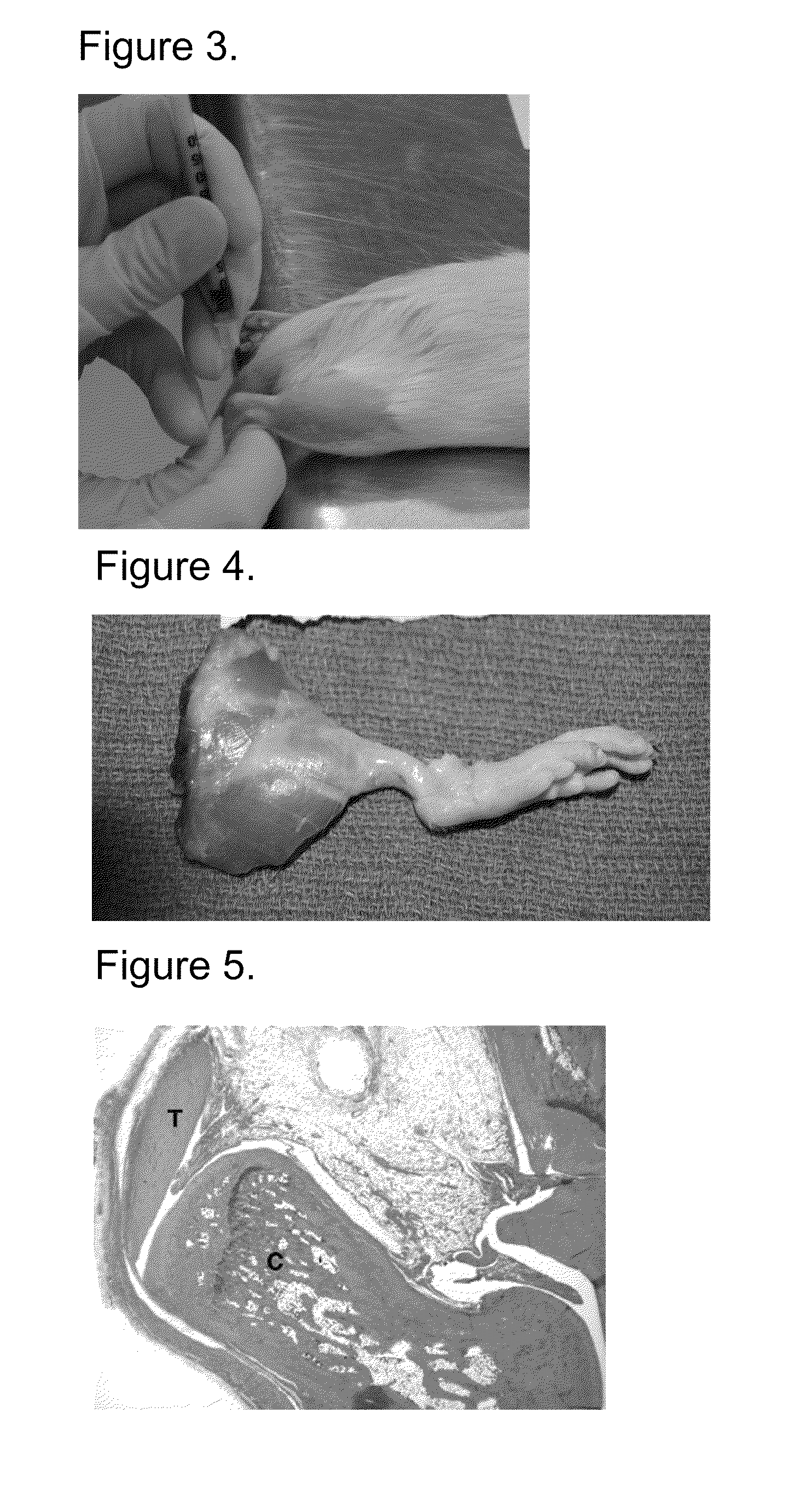Platelet-derived growth factor compositions and methods for the treatment of tendinopathies
a technology of platelet-derived growth factor and composition, applied in the field of compositions and methods for the treatment of tendinopathies, can solve the problems of tendons that are very slow to heal, rarely regained original strength, tendon degeneration, pain, etc., and achieve the effects of increasing tendon strength, increasing tendon strength, and increasing tendon strength
- Summary
- Abstract
- Description
- Claims
- Application Information
AI Technical Summary
Benefits of technology
Problems solved by technology
Method used
Image
Examples
example 1
Normal and Diseased Primary Human Tenocytes Proliferate in Response to rhPDGF-BB
[0103]This study determined whether rhPDGF-BB directly activated proliferation and / or chemotaxis of primary tenocytes derived from patients with tendinopathies. Such findings can support the notion of therapeutic potential of rhPDGF-BB in tendinopathies.
Patients and Methods
Patients
[0104]Ten patients with tendinopathies were involved in this study, including five patients with Achilles tendinopathy and five patients with tendinopathy of the posterior tibial tendon (PTT). An additional five patients were involved who underwent full joint replacement of the knee.
Primary Cultures of Tenocytes
[0105]Tendon tissue which would otherwise be discarded was obtained from normal and injured tendons during reconstructive surgery procedures performed for clinical indications. These tissues included the tendinopathic portion of the Achilles or PTT tendons, as well as the healthy (non-tendinopathic) portion of the flexor...
example 2
Safety Studies with rhPDGF-BB
Local Injection Test.
[0113]The purpose of this study was to determine the local toxicity of rhPDGF-BB following an intra-Achilles tendon delivery to rats. The intra-Achilles tendon administration mimics the route of administration of rhPDGF-BB in the clinic for the treatment of lateral epicondylitis. The injection site at the Achilles tendon-calcaneous junction mimics the insertion site of the extensor carpi radialis brevis tendon and lateral epicondyle bone.
[0114]The study used Sprague Dawley rats. The animals were housed at the same lab facility for the duration of the study. All housing and husbandry were in accordance with the Animal Welfare Act and the “Guide for the Care and Use of Laboratory Animals”. Rats were fed and watered in accordance with standard protocols. Food and water were withheld for appropriate study related events such as anesthesia. Animals were acclimated to the facility for a minimum of 5 days prior to the study. This acclimatio...
example 3
Dose Response of Intra-Tendon (IT) Application of rhPDGF-BB in the Collagenase-Induced Rat Achilles Tendon Injury Model
[0143]The objective of the study was to determine the dose-response of an intra-tendon application of rhPDGF-BB in a rat tendon collagenase model to validate the reparative effect of rhPDGF-BB on Achilles tendon injury and remodeling. We hypothesized that intra-tendon delivery of rhPDGF-BB will result in tendon repair by upregulating cell proliferation and restoring biomechanical strength of the tendon.
[0144]The recombinant human platelet-derived growth factor BB (rhPDGF-BB) is mitogenic and chemotactic for cells of mesenchymal origin, such as osteoblasts, tenocytes, chondrocytes and mesenchymal stem cells. Thus, when introduced into musculoskeletal sites of injury, rhPDGF-BB attracts connective tissue cells and progenitors to the treatment site, stimulating their proliferation, resulting in increased numbers of cells which subsequently deposit matrix to regenerate ...
PUM
| Property | Measurement | Unit |
|---|---|---|
| concentration | aaaaa | aaaaa |
| concentration | aaaaa | aaaaa |
| concentration | aaaaa | aaaaa |
Abstract
Description
Claims
Application Information
 Login to View More
Login to View More - R&D
- Intellectual Property
- Life Sciences
- Materials
- Tech Scout
- Unparalleled Data Quality
- Higher Quality Content
- 60% Fewer Hallucinations
Browse by: Latest US Patents, China's latest patents, Technical Efficacy Thesaurus, Application Domain, Technology Topic, Popular Technical Reports.
© 2025 PatSnap. All rights reserved.Legal|Privacy policy|Modern Slavery Act Transparency Statement|Sitemap|About US| Contact US: help@patsnap.com



